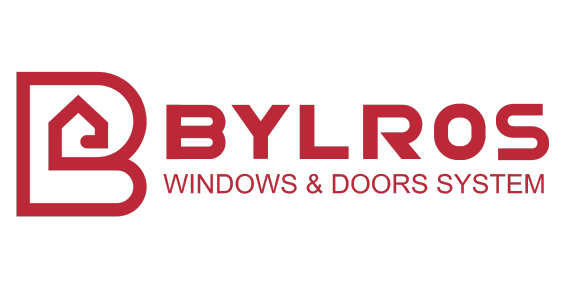Why Choosing the Right Aluminum Frame Matters
When it comes to construction, manufacturing, or even DIY home improvement, choosing the right aluminum frame for your project is a crucial decision that can affect durability, functionality, and overall aesthetics. Aluminum is widely used in various industries due to its strength, lightweight nature, and resistance to corrosion. But not all aluminum frames are created equal.
Whether you’re designing a window, building a greenhouse, installing a signage display, or planning an industrial structure, selecting the proper aluminum frame can make or break your project’s success. This guide will walk you through everything you need to know before making your choice.

1. Understanding Aluminum Grades and Alloys
Not all aluminum is the same. One of the most important factors when choosing the right aluminum frame for your project is understanding the different aluminum grades and alloys available.
Popular Aluminum Alloys Used in Framing
-
6061 Alloy: Known for its strength and weldability. Ideal for structural components.
-
6063 Alloy: Offers a smoother finish and better corrosion resistance. Frequently used in architectural applications like window frames and doors.
-
7075 Alloy: Extremely strong, used in aerospace and military applications. Less common for everyday framing due to cost.
How to Choose the Right Alloy
Ask yourself:
-
Does the frame need to be strong or just lightweight?
-
Will it be exposed to outdoor elements?
-
Is aesthetics (finish) a priority?
👉 For architectural purposes, 6063-T5 is a top choice. For load-bearing frames, consider 6061-T6.
2. Frame Design, Size, and Structural Requirements
Once you’ve chosen the right alloy, the next consideration is the frame design and size. Aluminum frames come in a variety of profiles — square tubes, angles, channels, and custom extrusions.
Key Factors to Evaluate
-
Load Capacity: Determine how much weight the frame must support. Use structural calculations or consult an engineer.
-
Wall Thickness: Thicker walls offer more strength but also add weight.
-
Length and Cut Options: Do you need custom lengths or pre-cut segments?
Use Case Examples
| Project Type | Recommended Frame Type |
|---|---|
| Greenhouses | 6063 alloy, rectangular tubing |
| Windows | 6063, custom extrusions for clean lines |
| Industrial Racks | 6061 alloy, square tubing |
| DIY Furniture | Lightweight frames with powder coating |
🛠 Pro Tip: Use corner connectors and gussets for added support and ease of assembly.
🔗 External Link Suggestion: Link to an authoritative source like The Aluminum Association for technical specs.
3. Finishing, Coating, and Environmental Considerations
Aluminum frames can be treated or finished in a variety of ways depending on the environment where they’ll be used.
Common Finishes for Aluminum Frames
-
Anodizing: Enhances corrosion resistance and offers a sleek, metallic finish.
-
Powder Coating: Available in many colors, offers a durable surface resistant to scratches and UV damage.
-
Mill Finish: The basic untreated aluminum; may oxidize over time but is cost-effective.
Where Will the Frame Be Used?
-
Outdoor Applications: Always opt for anodized or powder-coated finishes.
-
High-Humidity Areas: Choose anti-corrosive coatings to prevent pitting.
-
Interior Projects: Mill finish or decorative coatings may suffice.
4. Customization Options and Accessories
Modern aluminum frames are highly versatile and can be customized to meet nearly any design or functional requirement.
Customization Options Include:
-
Custom colors and textures
-
Drilled holes or slots for mounting
-
Curved or bent profiles
-
Integrated channels for wiring or LED strips
Useful Accessories
-
Plastic or metal corner brackets
-
Rubber gaskets for weather sealing
-
Hinges, locks, and sliders for doors/windows
✨ A good supplier should offer modular systems or be able to assist with custom extrusions.
5. Cost Considerations and Supplier Selection
Price is always a factor, but it shouldn’t come at the expense of quality. When choosing the right aluminum frame for your project, remember:
Factors Affecting Price:
-
Alloy grade (6061 is more expensive than 6063)
-
Wall thickness and length
-
Surface treatment (anodized/powder-coated)
-
Customization and accessories
Tips for Finding the Right Supplier
-
Check product certifications (ISO, RoHS)
-
Request material test reports (MTR)
-
Look at reviews or request references
-
Ask for a sample before a bulk order
🤝 Build a relationship with a reliable aluminum supplier who understands your project’s needs and can offer technical support when necessary.
Conclusion: Your Next Steps in Choosing the Right Aluminum Frame
To recap, choosing the right aluminum frame for your project involves:
-
Selecting the appropriate alloy and grade
-
Understanding the frame’s structural requirements
-
Considering finishes and environmental exposure
-
Customizing with the right features and accessories
-
Partnering with a trusted supplier
Whether you’re building a durable outdoor structure or an elegant interior fixture, making informed decisions will ensure your aluminum frame is up to the task — both functionally and aesthetically.
✅ Call to Action
Ready to find the perfect aluminum frame for your project? Explore our wide selection of premium-grade aluminum profiles here, or contact us for expert advice and custom solutions tailored to your needs.


